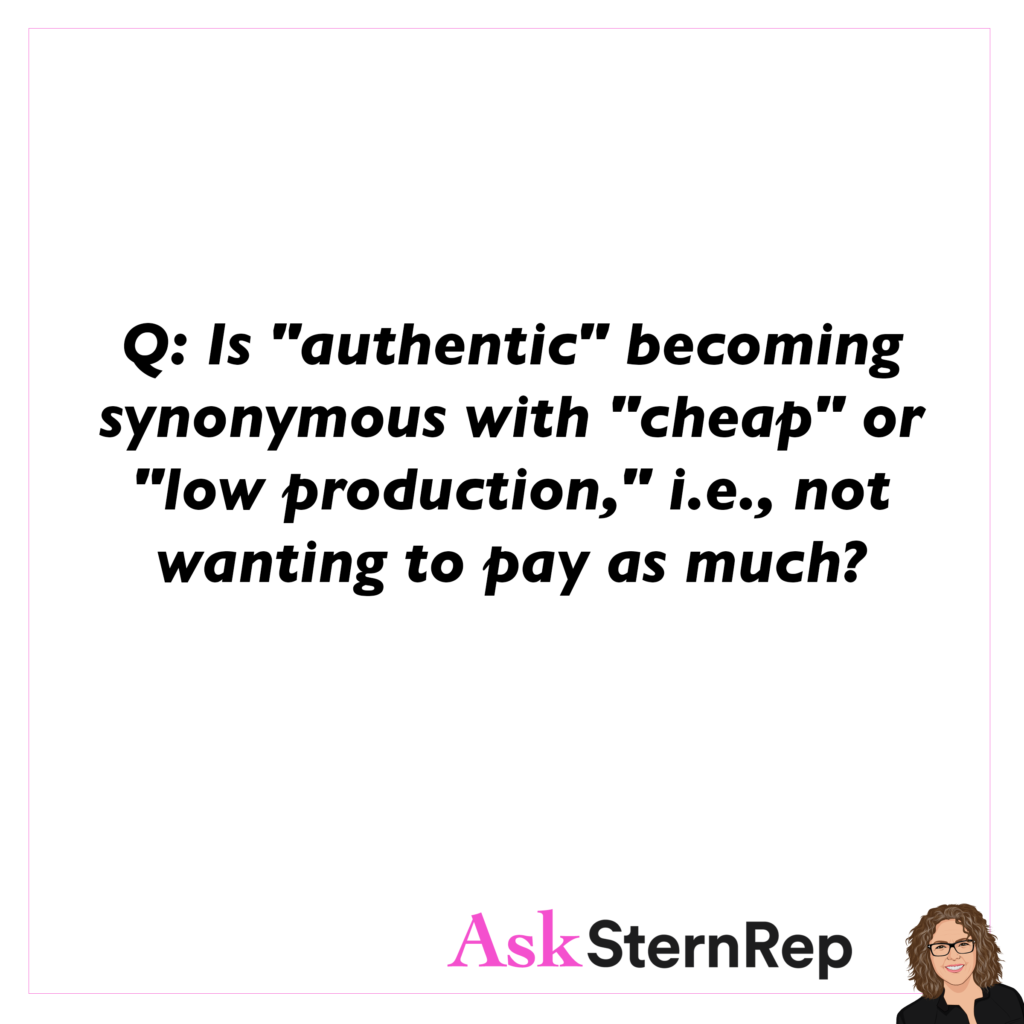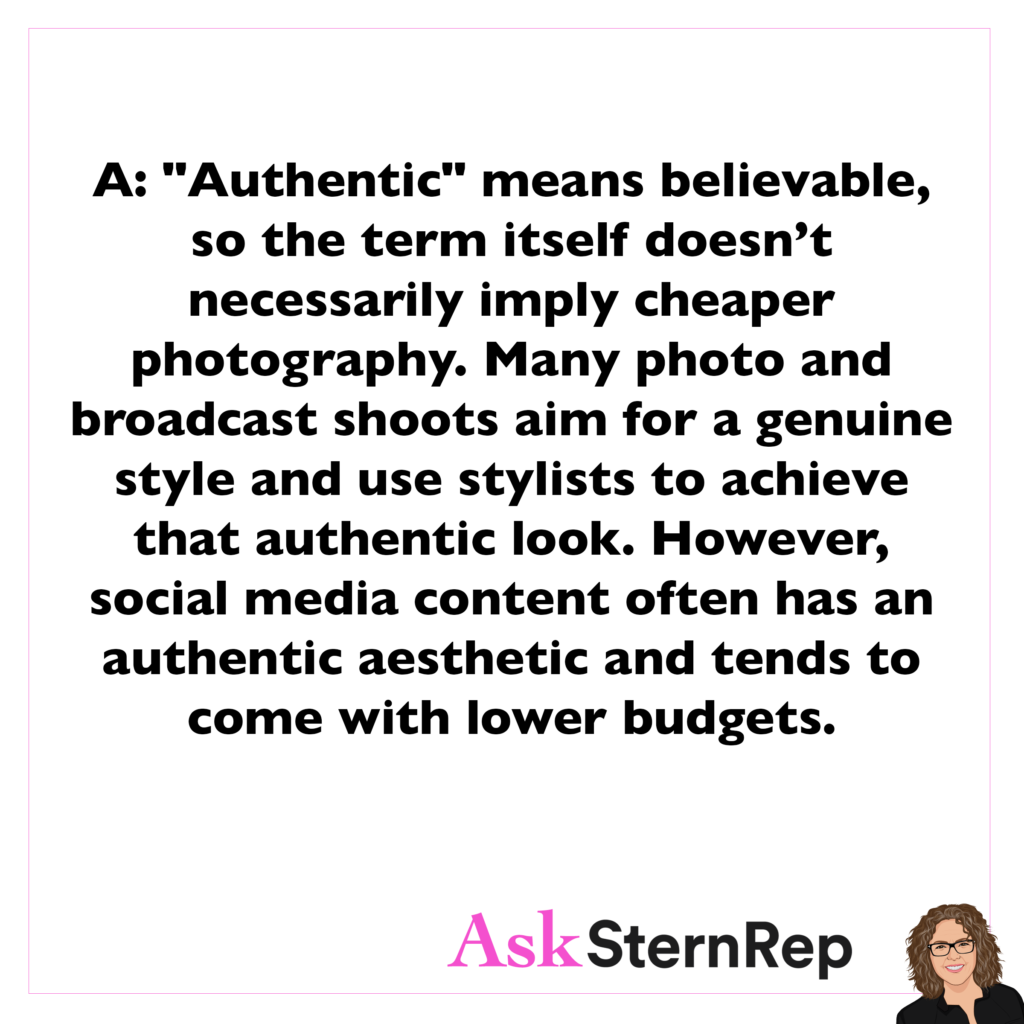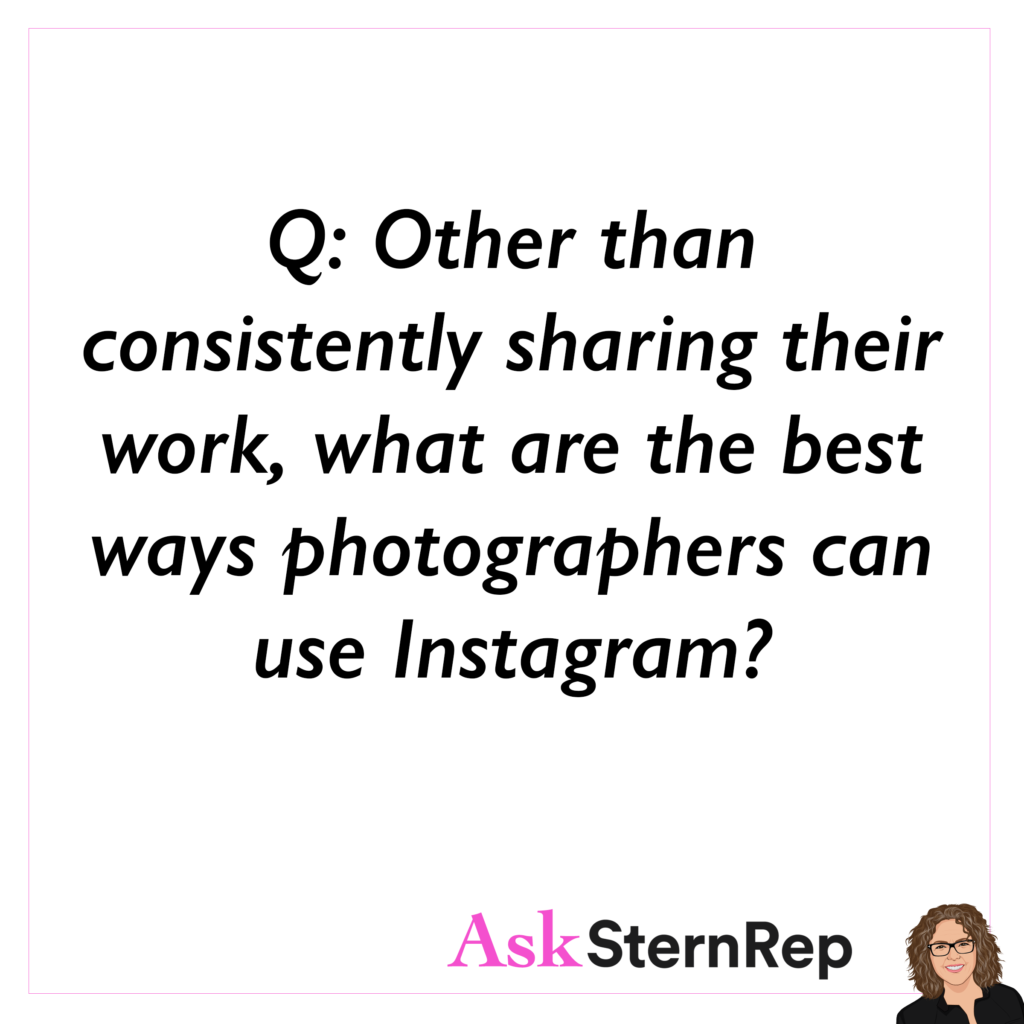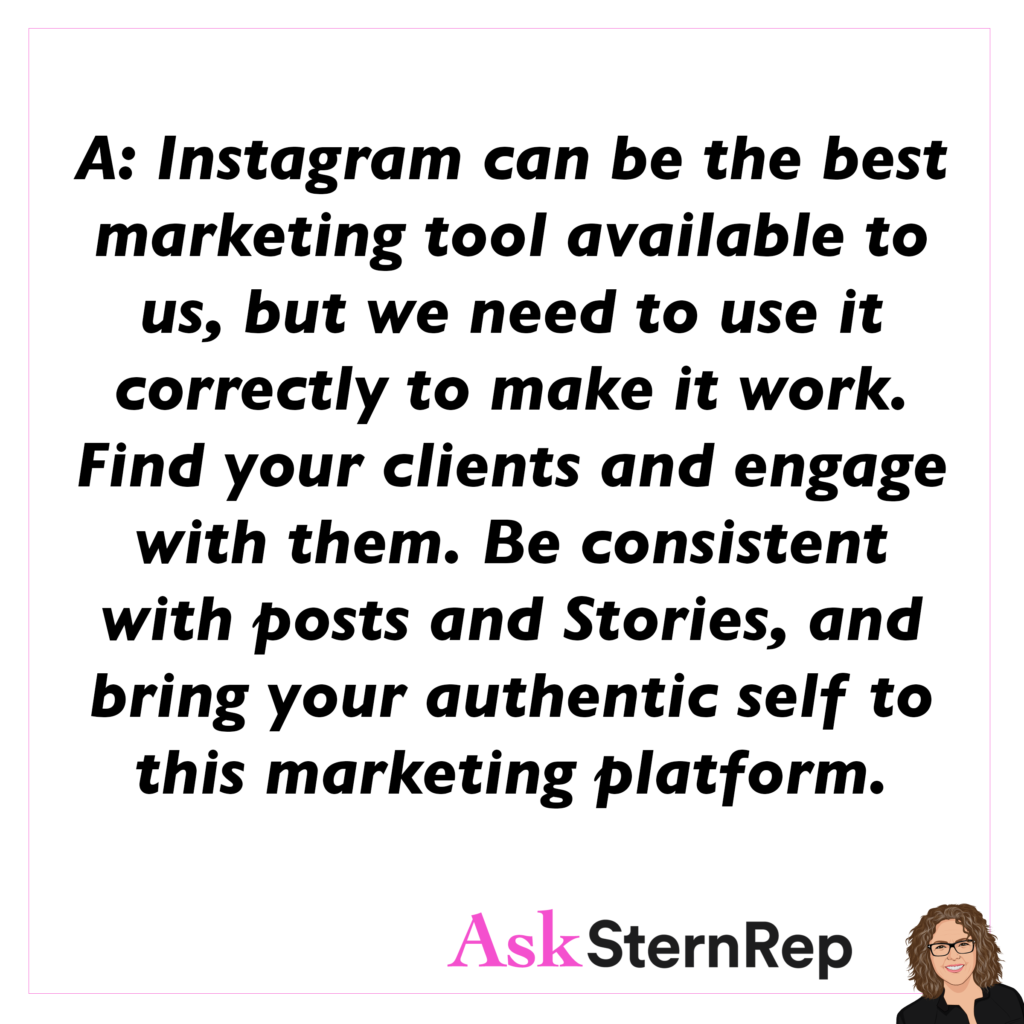

Q:
Is “authentic” becoming synonymous with “cheap” or “low production,” i.e., not wanting to pay as much?
A:
“Authentic” means believable, so the term itself doesn’t necessarily imply cheaper photography. Many photo and broadcast shoots aim for a genuine style and use stylists to achieve that authentic look. However, social media content often has an authentic aesthetic and tends to come with lower budgets.















